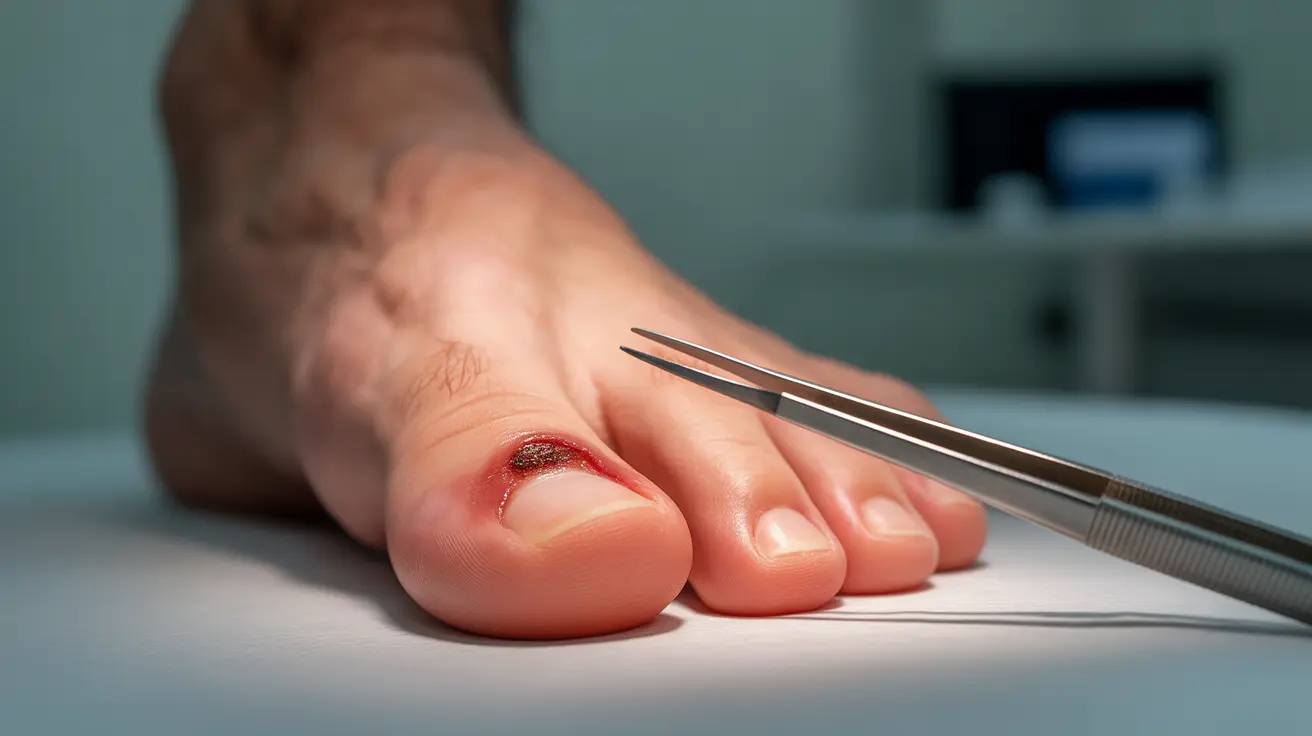An ingrown fingernail can be a painful and frustrating condition that occurs when the nail grows into the surrounding skin instead of over it. While this problem is more commonly associated with toenails, fingernails can also become ingrown, causing discomfort, swelling, and potential infection if left untreated.
Understanding how to properly treat an ingrown fingernail and knowing when to seek professional medical care is crucial for preventing complications and ensuring proper healing. This comprehensive guide will walk you through both home remedies and medical treatment options.
Understanding Ingrown Fingernails
An ingrown fingernail typically develops when the nail's edge grows into the surrounding skin rather than following its normal growth pattern. This can happen due to improper nail trimming, injury, or excessive pressure on the nail. Common symptoms include:
- Pain and tenderness around the nail
- Redness and swelling
- Warm sensation in the affected area
- Possible pus if infection develops
Safe Home Treatment Methods
When treating an ingrown fingernail at home, it's essential to use gentle, proven methods that won't cause further damage or infection:
Warm Water Soaks
Soaking the affected finger in warm water for 15-20 minutes, 3-4 times daily, can help soften the nail and surrounding skin, reducing pain and inflammation. Add a teaspoon of Epsom salt to the water for enhanced benefits.
Proper Nail Care
After soaking, gently lift the edge of the nail using a clean, soft tool like a cotton swab. Place a small piece of dental floss or cotton beneath the nail edge to guide it over the skin as it grows.
Infection Prevention
Keep the area clean and dry between soaks. Apply an over-the-counter antibiotic ointment and cover with a bandage to prevent infection while allowing proper airflow.
Professional Medical Treatment
Some cases require professional intervention, especially when home treatments aren't providing relief or when infection is present. Medical treatments may include:
Partial Nail Removal
For severe cases, a doctor may need to remove the ingrown portion of the nail under local anesthesia. This procedure provides immediate relief and allows the nail to regrow properly.
Antibiotics
If infection is present, your healthcare provider may prescribe oral antibiotics or topical medications to clear the infection before addressing the underlying nail problem.
Prevention Strategies
To prevent future ingrown fingernails, consider these important practices:
- Cut nails straight across, not curved
- Avoid cutting nails too short
- Keep nails clean and dry
- Wear properly fitting gloves during manual work
- Don't bite or tear your nails
Frequently Asked Questions
What are the safest and most effective home treatments for an ingrown fingernail?
The safest home treatments include warm water soaks with Epsom salt, gentle lifting of the nail edge with sterile tools, and keeping the area clean and protected. Using over-the-counter antibiotic ointment can help prevent infection.
When should I see a doctor for an ingrown fingernail instead of treating it at home?
Seek medical attention if you notice signs of infection (increased pain, redness, warmth, or pus), if you have diabetes or poor circulation, or if home treatments haven't improved symptoms after a week.
How can I prevent ingrown fingernails from recurring or getting worse?
Prevent recurrence by trimming nails properly (straight across), avoiding cutting them too short, keeping them clean and dry, and protecting your hands during manual work with proper-fitting gloves.
What medical procedures are available for severe or infected ingrown fingernails?
Medical procedures include partial or complete nail removal, drainage of any infection, and possible matrixectomy (preventing nail regrowth in severe recurring cases). These procedures are typically performed under local anesthesia.
Can over-the-counter medications help reduce pain and infection in an ingrown fingernail?
Yes, over-the-counter medications can help. Antibiotic ointments can prevent infection, while pain relievers like ibuprofen or acetaminophen can reduce pain and inflammation. However, these should not replace proper nail care and medical attention when needed.




